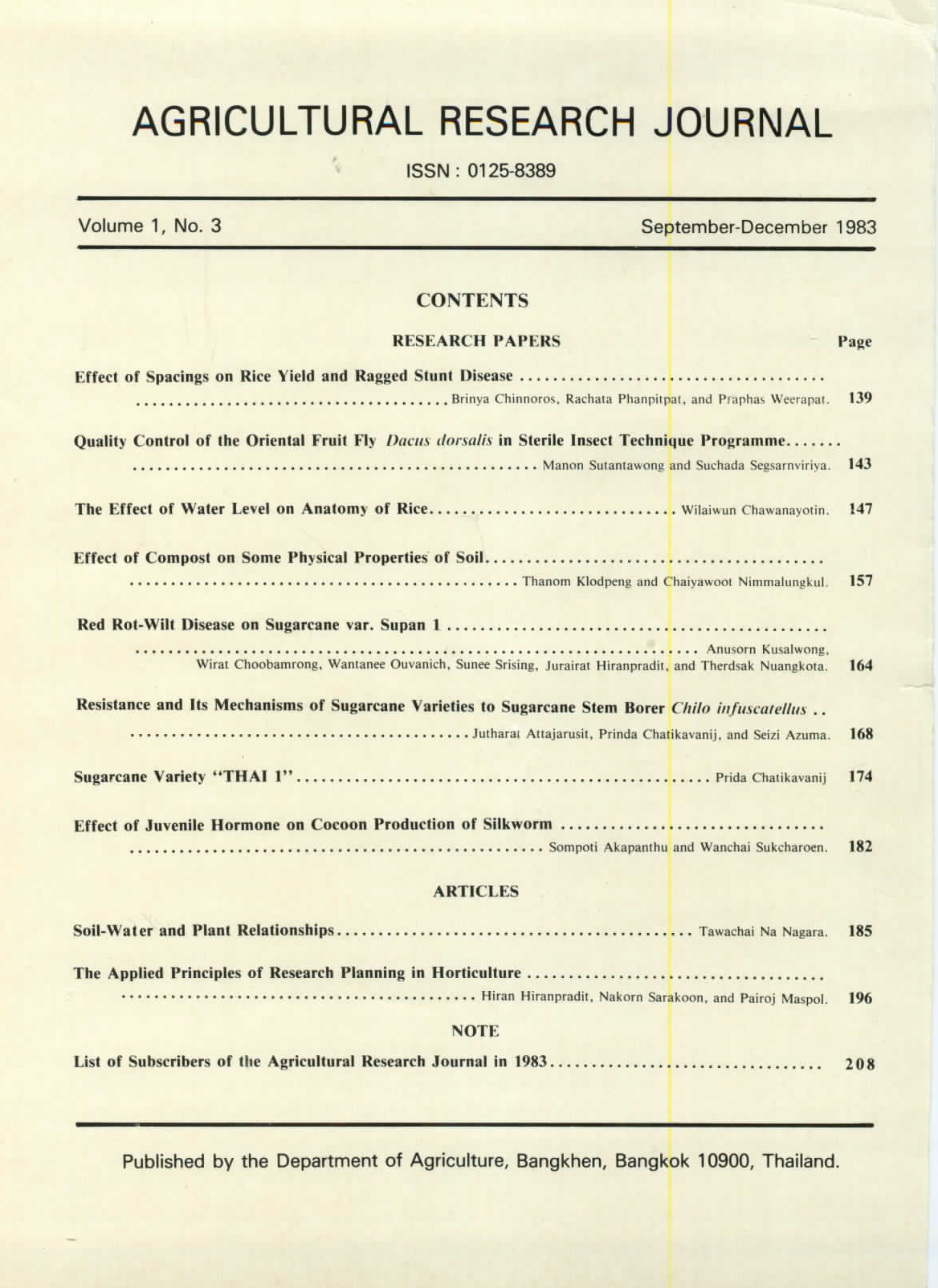The Effect of Water Level on Anatomy of Rice
Abstract
The experiment was conducted in the field and laboratory from March, 1980 to July, 1981. The internal structure of three floating rice and three lowland rice varieties were examined under three soil water conditions as follows :
1. Nonflooded condition:soil was kept moist throughout the growing period by everyday watering.
2. Fixed water depth condition:water depth was maintained at 10 cm. deep throughout the growing period
3. Varying water depth condition:water depth was increased 10 cm. weekly from the 6th to the 12th week after planting.
Two stems of rice varieties in each soil water condition were randomly cut at 90 days after planting. Two permanent slides were made from each internode of selected stems for microscopic inspection. Plant height was also measured periodically prior to the increment of water depth.
The results of the experiment revealed that the rice plants grew vigorously atj the age of 42-49 days after planting. This is true for all rice varieties and soil water conditions. Under fixed water deptha t 10 cm. deep, the lowland rice. Incondratictory , under nonflooded and varying water depth conditions, the floating rice stem was smaller in size than that of the lowland rice. The stem size of the lowland rice increased as the water depth was increased. However, this is not the case for the floating rice. The differences in soil water condition also resulted in the differences of lacuna size and vascular bundles scattering. The deeper the water level th elarger the lacuna size was observed. The enlargement of lacuna due to submergence was greater in the lowland rice than the floating rice. As the result of lacuna enlargement the vascular bundles were squeezed together and reoriented into a group of 2 to 3 bundles. In some cases the vascular bundles were formed encircling the half lower part of the enlarged lacuna.
In this study the starch grain content of the rice stem was also observed and found that the submerged stem of plants grown under varying water depth had no starch grain content at all. For this particular case the starch grains were found only in the above-water stem part. The number of starch grain content of the stem for plants grown under fixed water depth condition was also found very few. Remarkably, the starch grain content of the stem for plants grown under nonflooded condition was found abundant.
Downloads
Published
How to Cite
Issue
Section
License
Thai Agricultural Research Journal



